Raphaela Vogel
Ultranackt
18 May - 12 Aug 2018

Raphaela Vogel, Installation view, Ultranackt, view on Kopfschuss, 2018, Kunsthalle Basel, 2018. Photo: Philipp Hänger / Kunsthalle Basel. Courtesy of the artist; BQ, Berlin; and Galerie Gregor Staiger, Zurich.

Raphaela Vogel, Installation view, Ultranackt, view on Kopfschuss, 2018, Kunsthalle Basel, 2018. Photo: Philipp Hänger / Kunsthalle Basel. Courtesy of the artist; BQ, Berlin; and Galerie Gregor Staiger, Zurich.

Raphaela Vogel, Installation view, Ultranackt, view on Kopfschuss, 2018, Kunsthalle Basel, 2018. Photo: Philipp Hänger / Kunsthalle Basel. Courtesy of the artist; BQ, Berlin; and Galerie Gregor Staiger, Zurich.
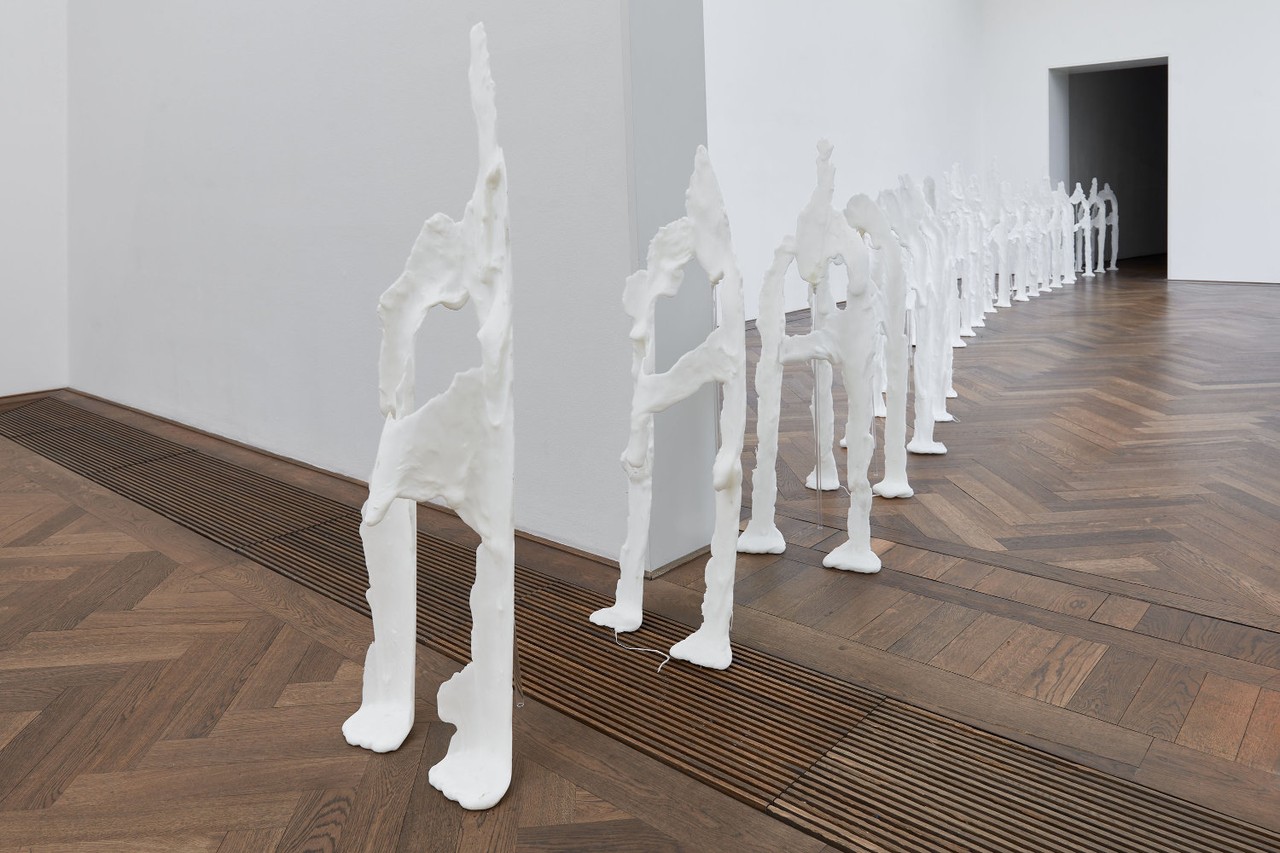
Raphaela Vogel, Installation view, Ultranackt, view on Uri, 2018, Kunsthalle Basel, 2018. Photo: Philipp Hänger / Kunsthalle Basel.
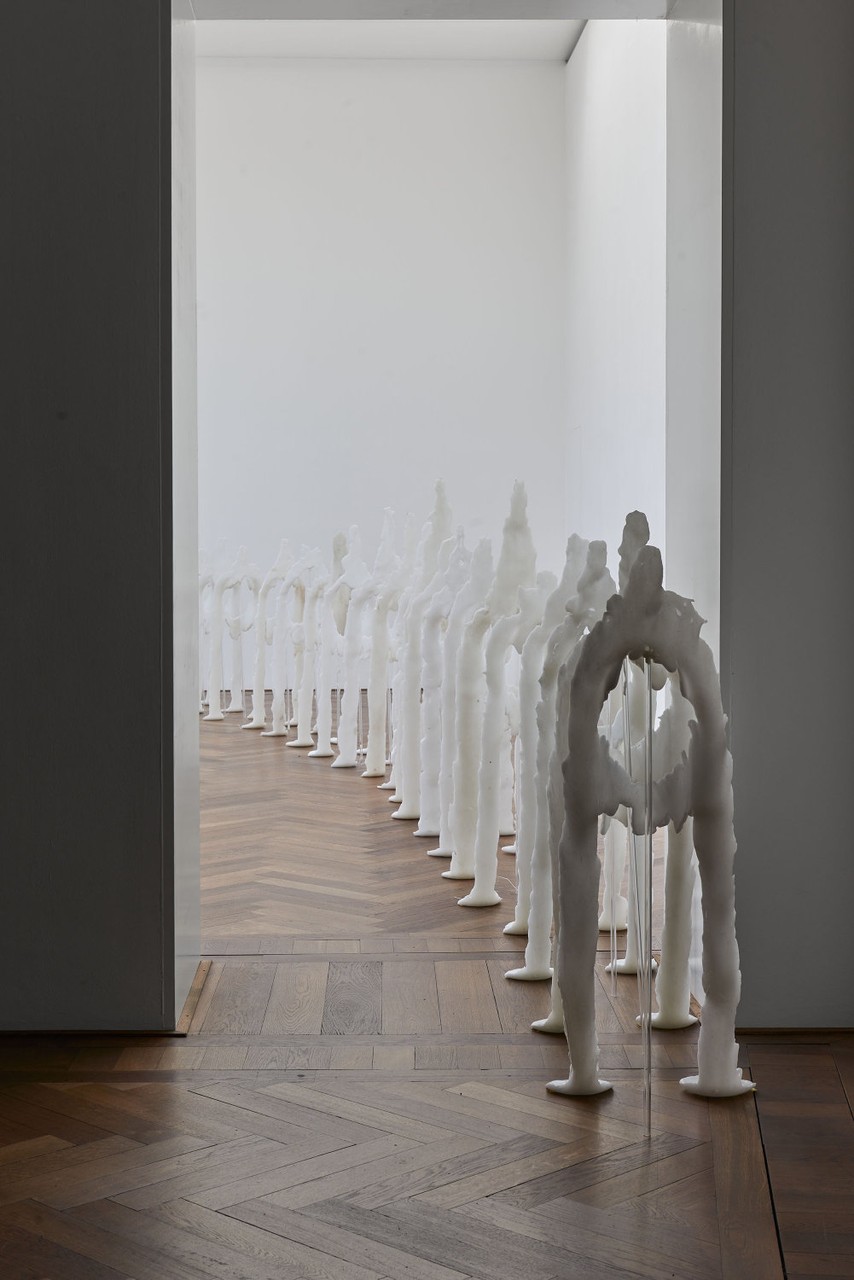
Raphaela Vogel, Installation view, Ultranackt, view on Uri, 2018, Kunsthalle Basel, 2018. Photo: Philipp Hänger / Kunsthalle Basel.
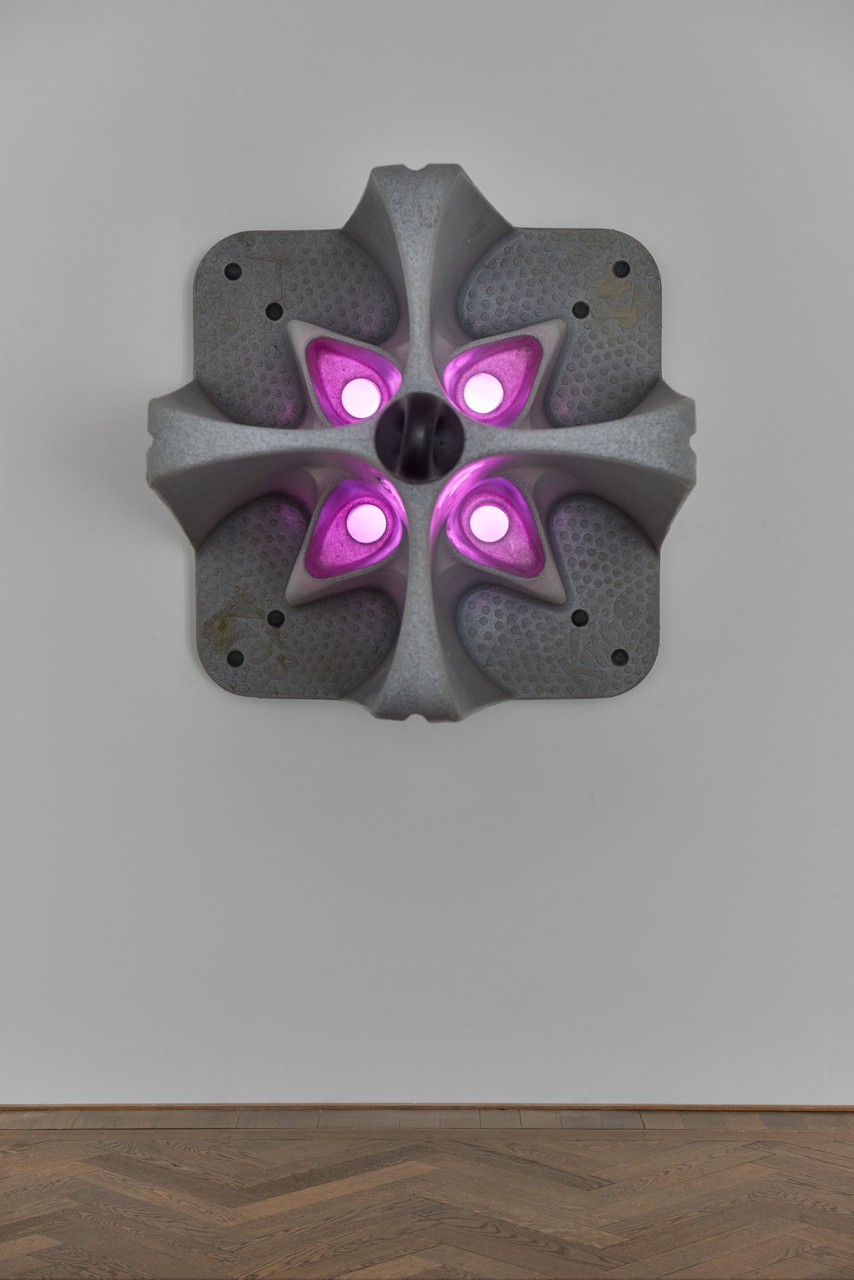
Raphaela Vogel, Installation view, Ultranackt, view on Uterusland, 2018, Kunsthalle Basel, 2018. Photo: Philipp Hänger / Kunsthalle Basel.
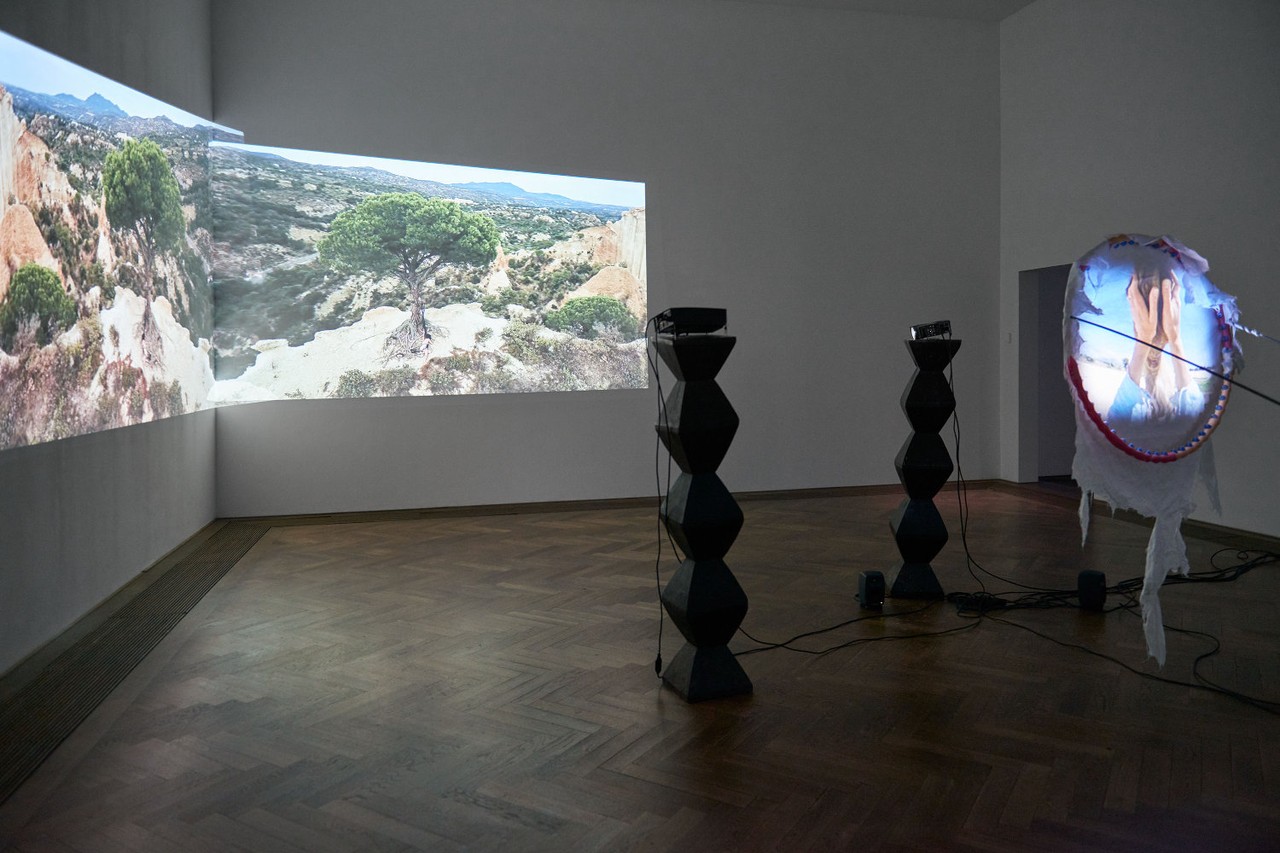
Raphaela Vogel, Installation view, Ultranackt, view on Fruit of the Hoop, 2018, Kunsthalle Basel, 2018. Photo: Philipp Hänger / Kunsthalle Basel.
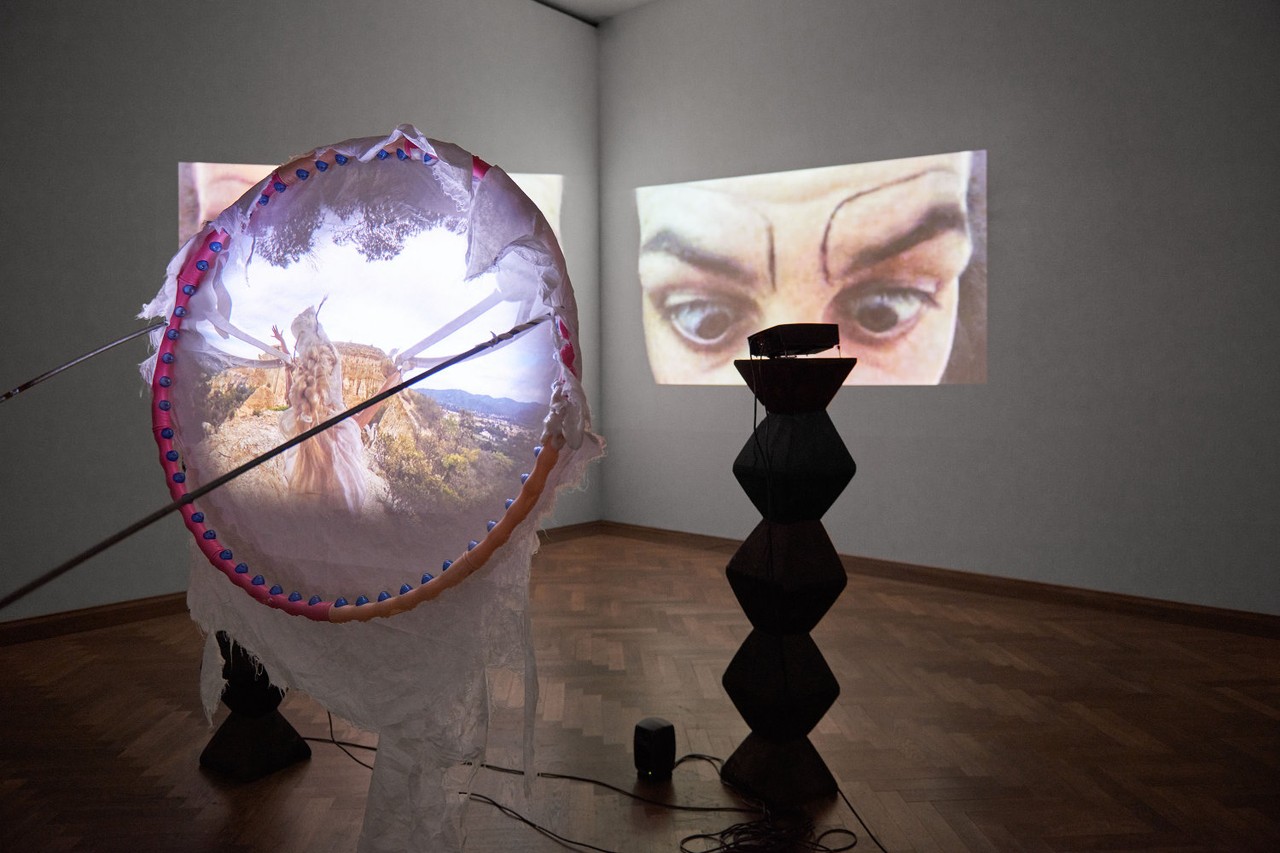
Raphaela Vogel, Installation view, Ultranackt, view on Fruit of the Hoop, 2018, Kunsthalle Basel, 2018. Photo: Philipp Hänger / Kunsthalle Basel.
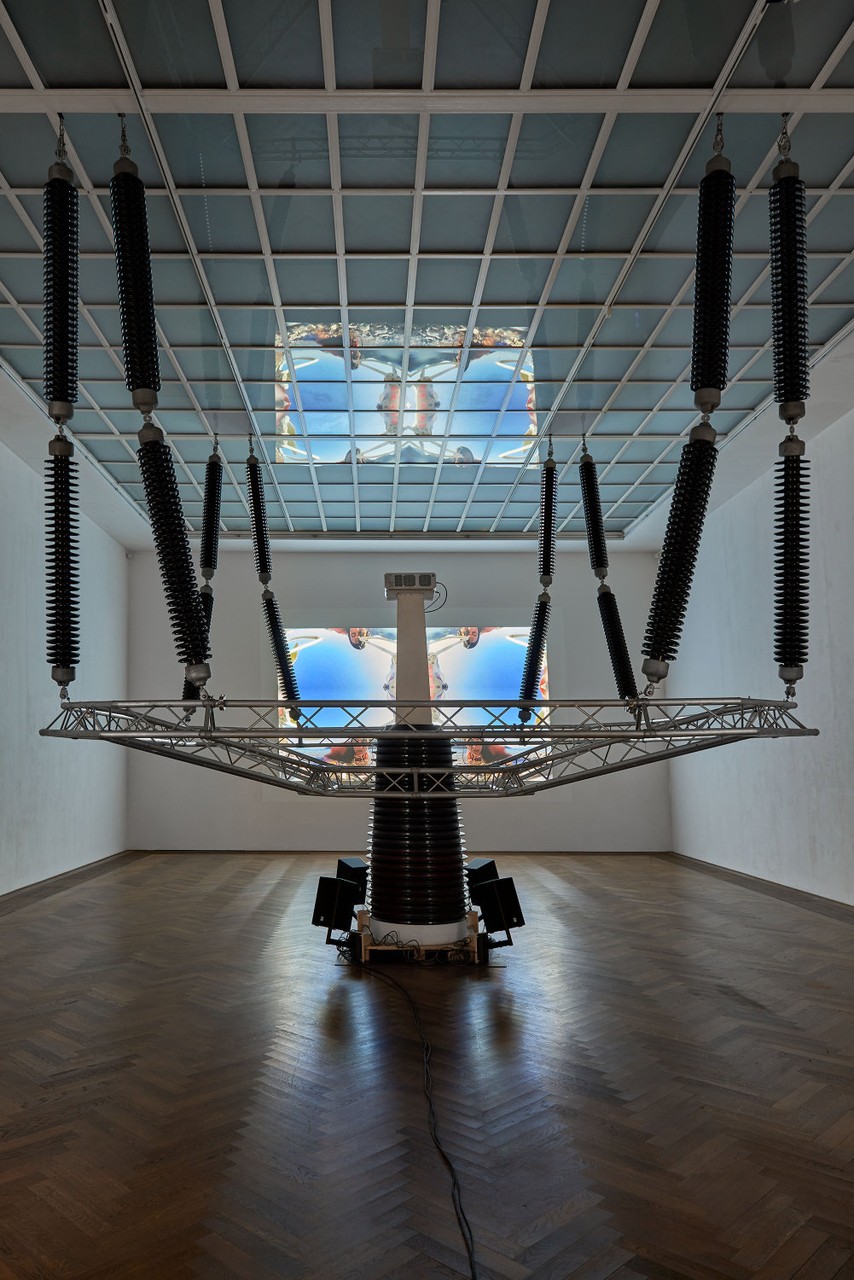
Raphaela Vogel, Installation view, Ultranackt, view on Isolator, 2016, Kunsthalle Basel, 2018. Photo: Philipp Hänger / Kunsthalle Basel.
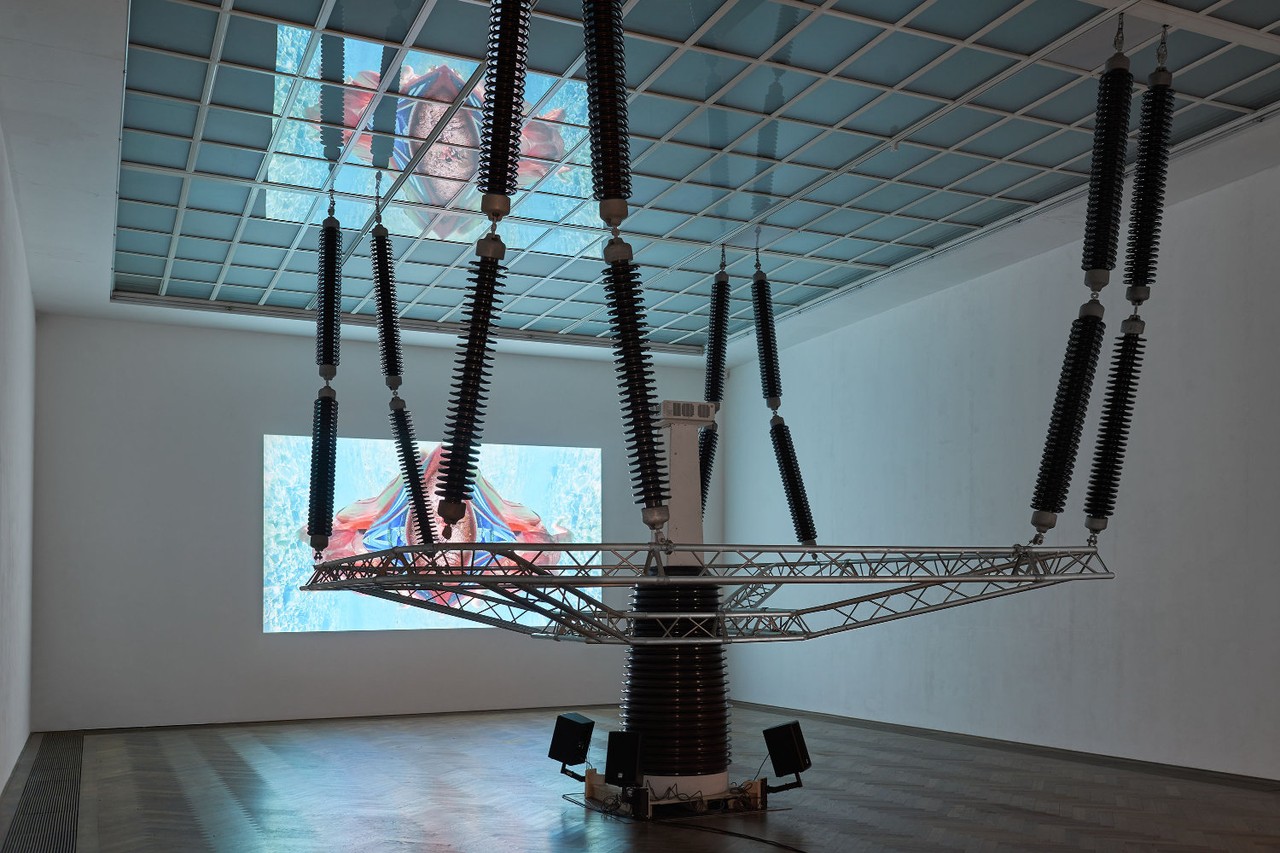
Raphaela Vogel, Installation view, Ultranackt, view on Isolator, 2016, Kunsthalle Basel, 2018. Photo: Philipp Hänger / Kunsthalle Basel.
RAPHAELA VOGEL
Ultranackt
18 May – 12 August 2018
Ultranackt, or “ultra naked,” the exhibition’s title, offers a first clue. How could nakedness be raised to a higher power? By skinning, Raphaela Vogel seems to suggest in the final room of this first solo exhibition outside her native Germany. Here, she appears in a video donning a full-body leotard imprinted with human mus- culature as if revealed by flaying. In other artworks leading up to it, she is, alternately, in her birthday suit, her body pressed against a lone tree and the earth, or barely clothed, barreling down a waterslide.
Camera operator, editor, costume and lighting designer, sound technician: Vogel typically occupies all of these roles, including that of sole human protagonist of her videos. Thus if there is a thread that runs through the artist’s work like a red-hot vein, it is the centrality of the artist herself, unabashedly exposed and exposing; if not literally naked, then meta- phorically so, baring it all.
The effect of Vogel’s unrelenting exhibitionism is an anarchic critique of phallocracy: at once taking possession of her own image and commandeering the tools and technology necessary for its production, she renders these devices emancipatory. There is a restlessness to the result, a feverishness to the sound juxta- positions created by this former teenage founder of a punk band, and to the images captured by her audacious camera placements. As an art student, Vogel threw or swung cam- eras as they recorded; for one video, she even attached a camcorder to the automatic retractable roof of a convertible car and, for another, fastened it to the leg of a galloping horse. Lately, she has secured cameras to various pre-programmed drones, literalizing the notion of a bird’s-eye view (“Vogel” means “bird” in German), or let a camera careen down a waterslide while recording her.
She cuts the images so they refract and reflect or repeat as they throb with soundtracks that range from song snippets of Judas Priest or a singer auditioning for a heavy metal band to the artist’s own cracking voice as she covers sentimental ballads. To open the exhibition, she dispenses with moving images altogether and instead relies on an installation whose soundtrack features swarms of crickets periodically interspersed by eruptions of one of Borussia Dortmund’s (BVB) anthems, passionately intoned by the German soccer club’s fans.
Throughout Ultranackt, the artist privileges a sculptural, installative practice, showing herself to be as much a maker of objects as she is a maker of moving images. Or rather, she reveals herself to be an artist that rarely thinks of video as an end in itself. The elaborate and palpably physical constructs within which her sound pieces or videos are shown are no mere framing devices, but integral to her thinking and practice. So, too, are the connections created between individual installations. Note how the cricket soundtrack of the first room is subtly echoed in the exhibition’s fourth space; or how the synchronization of projections allow for a timed relay between the brash and more quiet moments in the videos seen in the last two rooms; or even how the line of sculptures (each titled Uri, 2018) traversing the second room and acting as the exhibition’s spinal column, strangely echoes the cast elements in the wall works of the last room. And while there is a particularly spectral aspect to the sound and video elements of Vogel’s work, the often baroque mix of found and modified objects from which they are projected are often cumbersome and heavy. Invariably they assert sculpture’s most elemen- tal preoccupations—gravity and balance—as essential.
Vertigo-inducing, voyeuristic views and radio- controlled drone technologies characterize Vogel’s image-making. Yet the camera-loving bride invariably surrounds herself with seemingly potent but strangely inanimate bachelors. This is exemplified by the rearing stallion in the exhibition’s first room, its virility on dis- play even as the artist pierces the beast’s head with a spray of red cables ostensibly caused by the gigantic (now broken) end of an “arrow” of aluminum trusses that appears alongside it. Or consider the line of twenty-four dripping plastic forms standing like waiting, male suppli- cants, cast from the Dixi-brand urinal that is featured in the next room. Rendered almost unrecognizable due to its shifted orientation, the usually upright outdoor urinal here juts out from the institution’s wall like a futuristic machine-erection. Through the urination cavities, video footage of Vogel, clutching a plastic infant in a uterine fantasy, can be spied, in a sly retort to Marcel Duchamp’s museum peep show, Etant donnés (1946–66). In her other works, notably in the exhibition’s last two rooms, the “male principle” is embodied by a riff on the phallic rise of Constantin Brâncuși’s Endless Column (1918)—here serving as a series of wooden pedestals supporting projectors—as well as a massive electrical insulator weighing several tons, framed by alumi- num truss elements, simultaneously a monumentally erect plinth and a visual ob- stacle. For the artist, masculinity or the “male gaze” is embodied, too, by the eye of mechanical drones, so often advertised as playthings for boys. They voyeuristically fly overhead as the artist either languishes naked, like a biblical Eve in Fruit of the Hoop (2018), or hover, surveying her as she crawls, awash like a stranded island castaway in Isolator (2016).
For years now, alongside what Vogel calls her “video sculptures,” she has produced pieces that sit somewhere between a primitive form of painting and sculpture. Constructed from animal hides slashed, marked, and sometimes even formed to display various kinds of orifices, they are splayed against the walls that support them. In this exhibition there are specimens made from synthetic leather that include elements suggesting vertebrae cast from toy dinosaur bones, the title of each work paying homage to stereotypical names of Swiss cows (Alma, Heidi, Vreni). These visceral artworks hang in the exhibition’s last room across from the video installation in which Vogel appears in her flayed bodysuit. As if of- fering elemental cover, they seem at the ready to protect her over-exposed self.
That self is “ultranackt,” but for the artist, the title’s “ultra” contains yet another reference: to the diehard soccer fans known as Ultras in Italy, Germany, and Switzerland. Their fanatical (almost exclusively male) fervor and louche violence is echoed in the exhibition’s dramaturgy, its frantic escalation, and the artist’s deployment of elements common to mass public events (suggested by the urinals and concert trusses, the sound of swarming insects or soccer anthems). Inserting her lone self into a world of men, Vogel is a defiant agent, powerful and in your face, controlling her image in a cheeky rebuttal to masculine authority and every- thing it has for too long claimed as its own.
Raphaela Vogel was born in 1988 in Nuremberg, DE; she lives and works in Berlin.
Ultranackt
18 May – 12 August 2018
Ultranackt, or “ultra naked,” the exhibition’s title, offers a first clue. How could nakedness be raised to a higher power? By skinning, Raphaela Vogel seems to suggest in the final room of this first solo exhibition outside her native Germany. Here, she appears in a video donning a full-body leotard imprinted with human mus- culature as if revealed by flaying. In other artworks leading up to it, she is, alternately, in her birthday suit, her body pressed against a lone tree and the earth, or barely clothed, barreling down a waterslide.
Camera operator, editor, costume and lighting designer, sound technician: Vogel typically occupies all of these roles, including that of sole human protagonist of her videos. Thus if there is a thread that runs through the artist’s work like a red-hot vein, it is the centrality of the artist herself, unabashedly exposed and exposing; if not literally naked, then meta- phorically so, baring it all.
The effect of Vogel’s unrelenting exhibitionism is an anarchic critique of phallocracy: at once taking possession of her own image and commandeering the tools and technology necessary for its production, she renders these devices emancipatory. There is a restlessness to the result, a feverishness to the sound juxta- positions created by this former teenage founder of a punk band, and to the images captured by her audacious camera placements. As an art student, Vogel threw or swung cam- eras as they recorded; for one video, she even attached a camcorder to the automatic retractable roof of a convertible car and, for another, fastened it to the leg of a galloping horse. Lately, she has secured cameras to various pre-programmed drones, literalizing the notion of a bird’s-eye view (“Vogel” means “bird” in German), or let a camera careen down a waterslide while recording her.
She cuts the images so they refract and reflect or repeat as they throb with soundtracks that range from song snippets of Judas Priest or a singer auditioning for a heavy metal band to the artist’s own cracking voice as she covers sentimental ballads. To open the exhibition, she dispenses with moving images altogether and instead relies on an installation whose soundtrack features swarms of crickets periodically interspersed by eruptions of one of Borussia Dortmund’s (BVB) anthems, passionately intoned by the German soccer club’s fans.
Throughout Ultranackt, the artist privileges a sculptural, installative practice, showing herself to be as much a maker of objects as she is a maker of moving images. Or rather, she reveals herself to be an artist that rarely thinks of video as an end in itself. The elaborate and palpably physical constructs within which her sound pieces or videos are shown are no mere framing devices, but integral to her thinking and practice. So, too, are the connections created between individual installations. Note how the cricket soundtrack of the first room is subtly echoed in the exhibition’s fourth space; or how the synchronization of projections allow for a timed relay between the brash and more quiet moments in the videos seen in the last two rooms; or even how the line of sculptures (each titled Uri, 2018) traversing the second room and acting as the exhibition’s spinal column, strangely echoes the cast elements in the wall works of the last room. And while there is a particularly spectral aspect to the sound and video elements of Vogel’s work, the often baroque mix of found and modified objects from which they are projected are often cumbersome and heavy. Invariably they assert sculpture’s most elemen- tal preoccupations—gravity and balance—as essential.
Vertigo-inducing, voyeuristic views and radio- controlled drone technologies characterize Vogel’s image-making. Yet the camera-loving bride invariably surrounds herself with seemingly potent but strangely inanimate bachelors. This is exemplified by the rearing stallion in the exhibition’s first room, its virility on dis- play even as the artist pierces the beast’s head with a spray of red cables ostensibly caused by the gigantic (now broken) end of an “arrow” of aluminum trusses that appears alongside it. Or consider the line of twenty-four dripping plastic forms standing like waiting, male suppli- cants, cast from the Dixi-brand urinal that is featured in the next room. Rendered almost unrecognizable due to its shifted orientation, the usually upright outdoor urinal here juts out from the institution’s wall like a futuristic machine-erection. Through the urination cavities, video footage of Vogel, clutching a plastic infant in a uterine fantasy, can be spied, in a sly retort to Marcel Duchamp’s museum peep show, Etant donnés (1946–66). In her other works, notably in the exhibition’s last two rooms, the “male principle” is embodied by a riff on the phallic rise of Constantin Brâncuși’s Endless Column (1918)—here serving as a series of wooden pedestals supporting projectors—as well as a massive electrical insulator weighing several tons, framed by alumi- num truss elements, simultaneously a monumentally erect plinth and a visual ob- stacle. For the artist, masculinity or the “male gaze” is embodied, too, by the eye of mechanical drones, so often advertised as playthings for boys. They voyeuristically fly overhead as the artist either languishes naked, like a biblical Eve in Fruit of the Hoop (2018), or hover, surveying her as she crawls, awash like a stranded island castaway in Isolator (2016).
For years now, alongside what Vogel calls her “video sculptures,” she has produced pieces that sit somewhere between a primitive form of painting and sculpture. Constructed from animal hides slashed, marked, and sometimes even formed to display various kinds of orifices, they are splayed against the walls that support them. In this exhibition there are specimens made from synthetic leather that include elements suggesting vertebrae cast from toy dinosaur bones, the title of each work paying homage to stereotypical names of Swiss cows (Alma, Heidi, Vreni). These visceral artworks hang in the exhibition’s last room across from the video installation in which Vogel appears in her flayed bodysuit. As if of- fering elemental cover, they seem at the ready to protect her over-exposed self.
That self is “ultranackt,” but for the artist, the title’s “ultra” contains yet another reference: to the diehard soccer fans known as Ultras in Italy, Germany, and Switzerland. Their fanatical (almost exclusively male) fervor and louche violence is echoed in the exhibition’s dramaturgy, its frantic escalation, and the artist’s deployment of elements common to mass public events (suggested by the urinals and concert trusses, the sound of swarming insects or soccer anthems). Inserting her lone self into a world of men, Vogel is a defiant agent, powerful and in your face, controlling her image in a cheeky rebuttal to masculine authority and every- thing it has for too long claimed as its own.
Raphaela Vogel was born in 1988 in Nuremberg, DE; she lives and works in Berlin.
